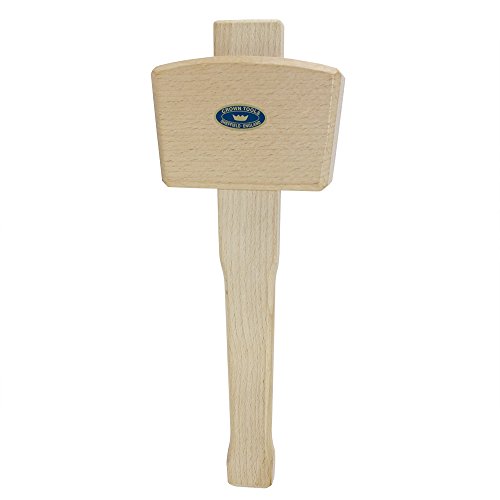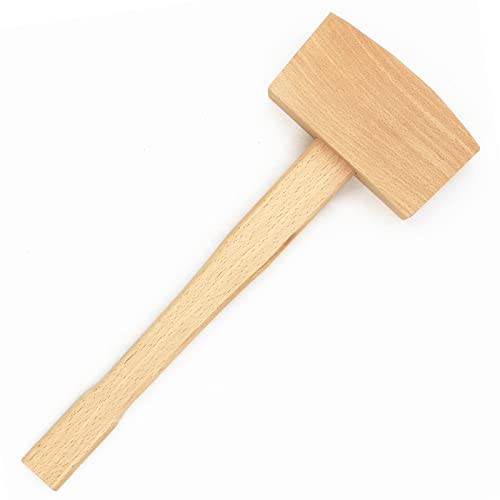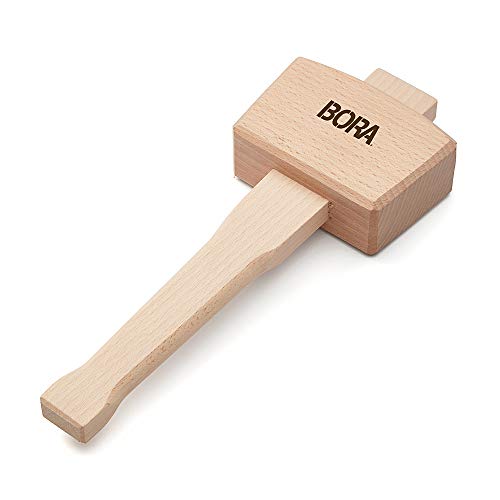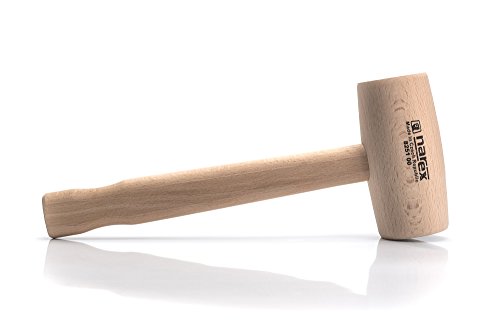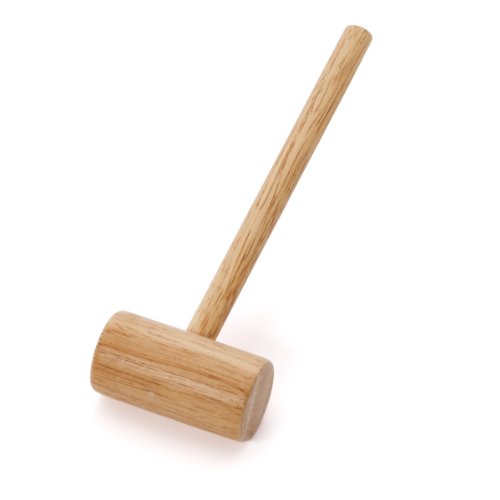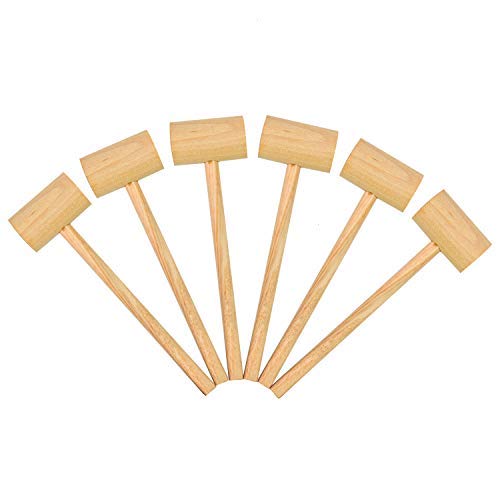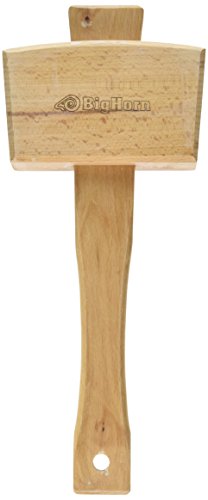The Best Wood Mallet for Your Next Carpentry Project
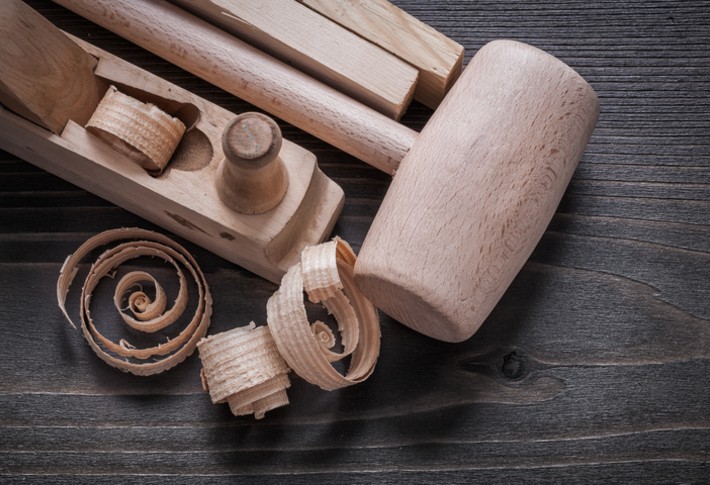
Whether you’re carving a wooden or ice sculpture, driving nails into planks, or simply just wanting to hit things really hard, you can’t go wrong with a wood mallet. While it may not be as heavy and, by extension, heavy-duty compared to other types of mallets, wood mallets offer control and precision due to their lighter frame. This makes them ideal for sculptors and carvers who want everything pixel-perfect.
Wood mallets are fairly common these days, as are many other things, but you may find it difficult to pick the right one for your setup. Well, look no further – we’ve handpicked seven of the best wood mallets in 2023 for you so that you don’t have to.
- Best Overall: CROWN BeechWood Mallet Shop Now ➔
- Runner Up: Weichuan Unfinished Beech Wood Mallet Shop Now ➔
- Honorable Mention: Bora Wooden Mallet Shop Now ➔
- Contender: Narex Beech Wood Mallet Shop Now ➔
- Also Consider: Farberware Seafood Wood Mallet Shop Now ➔
- Also Consider: YoleShy 6PCS Crab Wood Mallet Shop Now ➔
- Also Consider: Big Horn Beech Wood Mallet Shop Now ➔
Our Picks Of The Top Wood Mallets
Best Overall
Here we have the most popular wood mallet on our list, with over 680 ratings as of writing this article. It weighs in at 20 ounces, making it a little lighter than some of the other mallets we’ll be covering shortly. Like the previous mallet, this mallet is made out of beechwood, so you can expect quality and durability as you work.
Interestingly, the store page describes the mallet as “Designed to be quiet and yet transmit the maximum blow”. What this means is that all the force that you apply when hitting the mallet doesn’t just turn into needless noise. Instead, you get a firm tap every time you hit with it, and you don’t disturb the neighbors while you’re working, either. It’s a win-win for everybody.
Runner Up
The previous wood mallets were similar not only because of the type of wood that they used. They were also similar in the sense that they had handles designed for carving – easy to grip, and not painful to hold even after hours of use. This mallet, while also designed for carving, isn’t as heavy on the curves – it’s got a minimal handle that looks almost completely straight, save for the little bump towards the tip.
This can be a dealbreaker for some, but others may find this to be the ideal choice. Ergonomic design in tools isn’t uncommon these days, but not everybody is comfortable with using them, as ironic as it may sound. Maybe you’re just a fan of the old-fashioned straight handles – there’s nothing wrong with that, either.
Honorable Mention
Do you ever get worried that you’ll end up breaking or damaging your chisel or other tools while you use your mallet? No matter how durable your chisel may be, it’s only a matter of time before signs of wear and tear start to appear. As such, you’ll want to minimize the damage that occurs with every strike and blow.
This wooden mallet is made out of beechwood, the same as the other carving mallets. Interestingly, however, the mallet boasts a powerful and durable frame, while also claiming it can provide both precision and comfort. That’s a lot of claims for a mallet, but it isn’t just all bark and no bite – the mallet does have a solid frame with an easy grip. You’d even feel like it was an extension of your own arm after using it long enough.
Contender
The carving mallets we covered thus far were made out of beechwood, but there was one more thing that they had in common – their shape. You may have noticed that the mallets all had curved heads, which was useful when carving in certain ways. However, if you prefer a more flat surface that’s akin to traditional mallets, then this is the product for you.
This mallet is designed to be used in carving, like the others. However, its flat and straight shape makes it different from the rest. If you’re used to these types of mallets, then picking this one up will feel like second nature.
Also Consider
Crab hammers are cheap and relatively easy to make, which is why they’re more or less relatively affordable. However, if you’re willing to invest a few more dollars into something a little more high-quality, then you’ll find that you can rely on the crab mallet far more due to its superior design and build.
Unlike the six-piece set from earlier that cost less than $10, this wooden crab mallet goes for over $15 for just one piece. The upside? It’s got superior quality and is made with high-grade wood. You can bet that you’ll be cracking open crabs and lobsters daily without so much as a sign of damage from the hammer.
Also Consider
Okay, a quick break from carving mallets – let’s cover more general-use wood mallets. After all – chances are you aren’t here to carve and make pretty sculptures – you just want to hit things really, really, hard. Well, if you want a cheap yet durable mallet that’ll last you for years to come, then this set of crab hammers will serve you very well.
As the name suggests, this set of hammers is used for one particular task – breaking the shells and chitin of various seafood, including lobster, crab, and more. You don’t have to pry open the seafood anymore when you can just whack it with a mallet and be done with it.
Also Consider
This wood mallet is made for one particular purpose – carving. If you aren’t aware, carving mallets differ slightly from regular mallets – one of the key differences being shape. As you’ll see later on in this list, there are other types of wood mallets that aren’t made specifically for carving. This particular mallet, however, is made to be used alongside your favorite chisels.
The mallet is made out of beech wood – a popular choice among wood mallet makers for its durability and lightweight nature. This allows the carver to be precise with every tap they make with the mallet. The mallet is fairly large, larger than half of the average torso, so you may find it difficult to work with at first, especially if your hands can’t keep up with its sheer size. And don’t you worry about splinters – the mallet is treated so that it’s splinter-free, preventing you from getting injured while at work.
Highest-Quality Wood Mallets Buying Guide
Wood mallets are commonly used in sculpting and carving, but they also have more general uses for the majority of people, too. Here’s what you need to know when buying one.
What Is a Wood Mallet?
A wooden mallet is a type of mallet that’s made primarily out of wood. Most mallets have a wood handle, but the heads are typically made out of another type of material, such as steel. Wood mallets are cheaper and lighter as the heads are also made out of wood.
Things To Consider Before Buying Wood Mallet
Remember these tips when buying a wooden mallet.
Purpose
What is the purpose of buying a wooden mallet? You should know this before even considering buying one of these hand tools. If you’re a craftsman or sculptor, you’re likely getting it to use alongside your trusty chisel. Therefore, you’ll want a mallet that’s specifically designed for the craft – there are plenty out there, ranging in different sizes and shapes.
Alternatively, you could also be getting a wooden mallet to break open seafood and shellfish. This is another common use of wood mallets, as you don’t need something as heavy as a metal hammer to break open chitin. These types of hand tools are also relatively cheaper, so you don’t have to worry about spending too much.
Weight
The weight of a mallet can dictate a few things. First, it dictates who can even lift it in the first place – luckily, pretty much any adult can lift a wood mallet due to how light the materials are. Second, it also dictates how much control and force you have when hitting. Heavier mallets can allow you to apply more force, but lighter mallets give you far more control over every tap. A small hammer will be more lightweight and is better suited for more delicate jobs.
Wood handle
A smooth wood handle will make the mallet much more pleasant to use than rough wooden handles will. Additionally, the wood handle may be shaped ergonomically so that it comfortably fits in your hand.
Material
While a wooden mallet will always be made out of wood, the type of wood used can vary. Some may be made of red oak. Others may be made of beech wood. You can also find them made out of birch wood, as birch has a beautiful appearance. You want to go for a material that is durable, functional, and attractive.
Wood Mallet Price Range
Depending on their usage, wooden mallets can go from as cheap as $5-7 to as much as $20 or more. As a general rule of thumb, wooden mallets are typically more expensive if they’re made for the purposes of carving as opposed to simply hitting things.
How We Choose Our Wood Mallet
Our wooden mallets are chosen based on their weight, materials used, size, and shape.
DIY Wood Mallet
If you are so inclined, you can also make your own wood mallet with a few hand tools. This should be an easy project for any carpenter or woodworker with some experience. To learn how, check out this video from 731 Woodworks:

People Also Asked
Are wood mallets reliable?
For light work, and work that requires control and precision, wood mallets are the better type of mallet to choose. They pose little to no threat to your other tools, and they’re easier to work with, too.
Can I get splinters from a wood mallet?
Wood mallets are treated and manufactured to be splinter-free, so unless you end up damaging the surface of the mallet, exposing the inside, then it’s unlikely you’ll get splinters from any wood mallet.
Article Contributors
The Woodsmith Review Team’s product reviews and in-depth guides are here to help you choose the best tools and gear to build great-looking projects confidently. Woodsmith is reader-supported: When you buy through links on our site, we may earn an affiliate commission. Large language models (like Artificial Intelligence) may have been used in the research and creation of the content.
Inquiries regarding specific articles or product testing should be sent to aimperiapt@gmail.com

